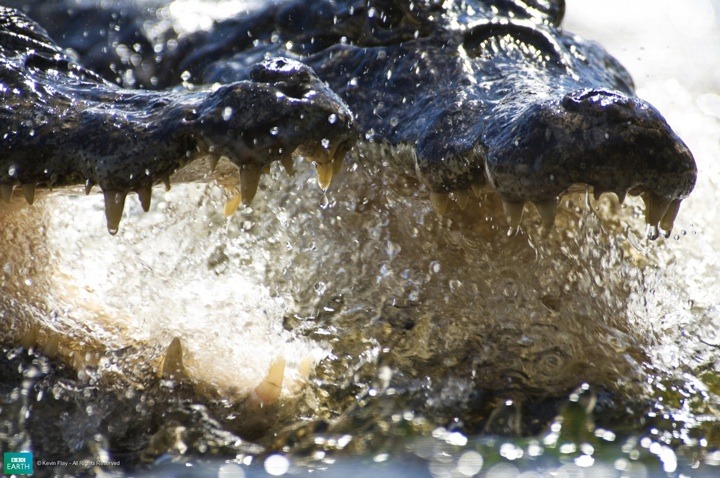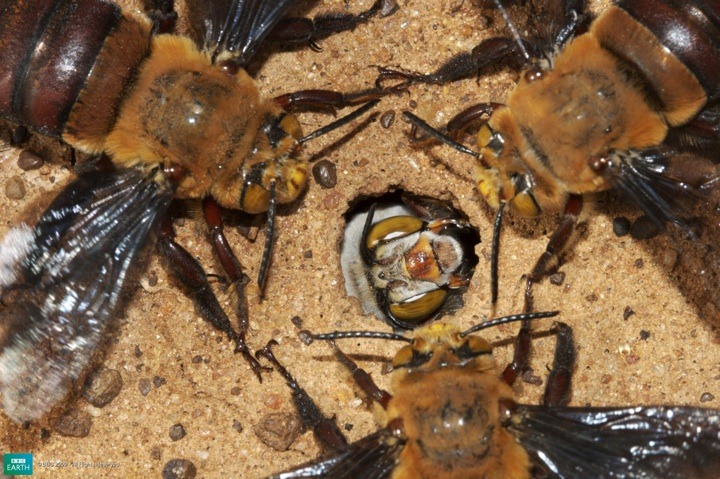1. Black Caiman At six meters long, this scaly giant is the largest species in the caiman family and more impressively, the largest predator in the Amazon basin. It has self-replacing teeth along with the most acidic stomach bile in the animal kingdom. This allows them to digest every bit of their prey, including bones, shells and teeth.
2. Dawson Bees As one of the largest and strongest bees in the world, it shouldn’t come as a surprise to learn that when the male of the species seeks out a mate, a frenzy of lust and aggression ensues. Weaker competitors are often left for dead.
3. Gharial Crocodile Not only does this croc have a mouthful of razor-sharp teeth, it also has a reputation for being the fastest crocodilian on the planet.
4. Chacma Baboon With a bite much worse than any bark, the mature chacma baboon has canines that can measure up to five centimeters in length — almost as long as a lion’s!
5. Lammergeyer Vulture This vulture is so smart it has figured out that the best way to release the marrow from the bones it scavenges is by dropping them from a great height, smashing them against the hard rock below.
6. Piranha Although piranhas tend to feed on insects, aquatic plants, small fish and snails, they have been known to attack humans. Recently, 100 beach goers in Brazil were sent to the hospital with bites after a school of piranhas attacked.
7. Gaboon Viper
Gaboon vipers are the largest vipers in the world and accordingly they have the longest fangs of any venomous snake — up to five centimeters in length! Their large size means that they are slow movers, but their skin pattern allows them to camouflage themselves against the forest floor where they can lie in wait for their prey.
8. Aurelia Jellyfish
This common jellyfish moves by pulsating its saucer shaped colorless body. Beware the tentacles which surround its body — they contain stinging cells which are used to catch prey.
9. Hamadryas Baboon
Mistaking this baboon’s yawn for tiredness could be a deadly mistake. This old world monkey uses visual cues such as displaying its canine teeth — as part of a so-called tension yawn — and bobbing its head up and down as a sure sign that they are ready for a fight.
10. Lions
While reputed to sleep for around twenty hours a day these ferocious hunters always have one eye open. So in the likelihood that prey should appear, they are ready to get up and go!
This post originally appeared on the BBCEarth blog.










Leave a Reply
You must be logged in to post a comment.